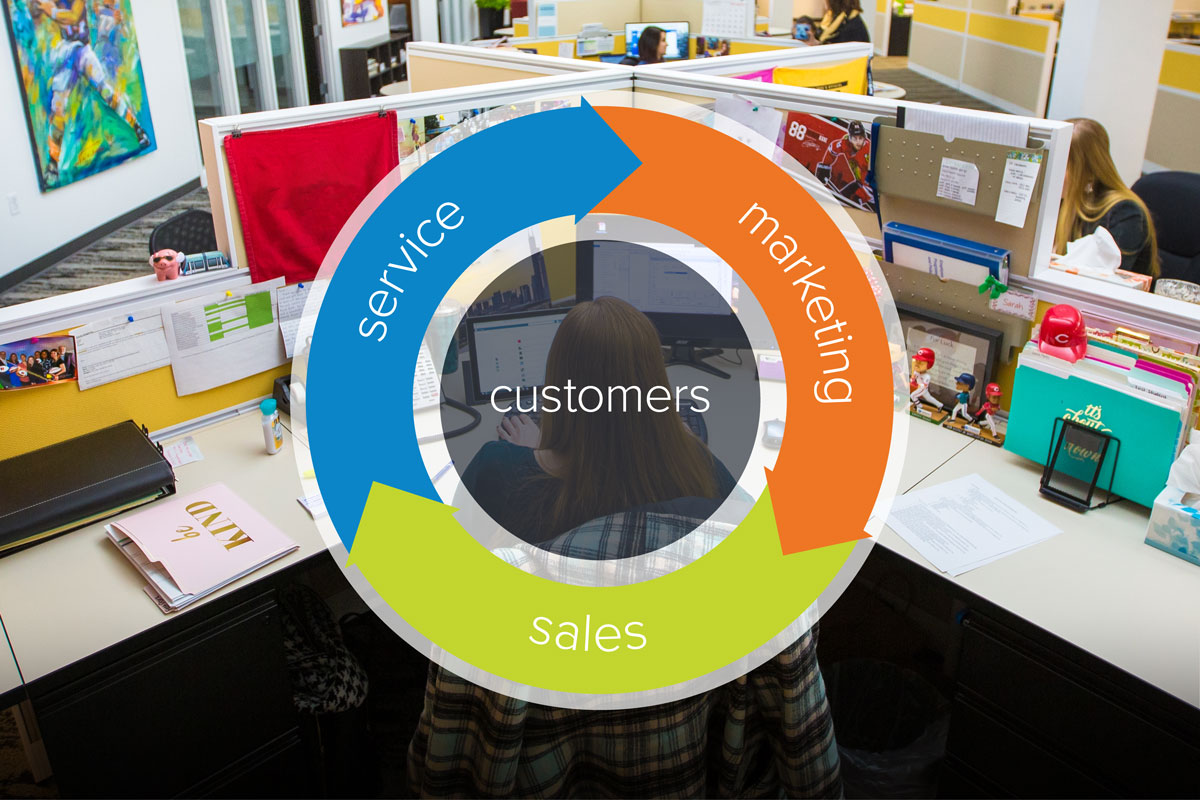Funnels are out. Flywheels are in.
In case you didn’t know, now you know.
Since its introduction at the INBOUND conference this past fall, it has been discussed and examined on just about every major marketing blog or publication and has likely been on the minds of marketers.
The cynic in me says the adoption of a flywheel was for the sake of a certain marketing automation software company to make a splash at its high profile conference that boasts 20,000+ attendees and speakers by the likes of Michelle Obama and Tina Fey, all while benefitting from the meta message of, “Oh, you actually need marketing automation software in order for your marketing to be successful, so buy ours.”
Sure, the flywheel might be the marketing industry’s darling for 2019, but cynicism aside, the flywheel and the concepts that accompany it have actually presented a new way for me to look at my own marketing practice.
Here are six reasons why:
The customer is now at the center of marketing activity, not at the bottom of it.
Say it with me. The parts of the marketing funnel, from top to bottom, are: Awareness, Interest, Evaluation, Decision, Purchase. In the funnel, customers are at the bottom, almost an afterthought. As far as marketing and sales are concerned, the journey ends with purchase. By contrast, the flywheel considers a customer’s purchase merely a part of a larger story.
It prompts a re-thinking of strategic decisions.
While customers will likely still behave and make purchases that resemble the funnel, thinking of the customer experience more as a non-linear, iterative process lends itself to more customer-centric thinking, which can affect strategic marketing choices.
For example, say you are brainstorming new content for the company blog. What if you included the customer in that brainstorm by researching the top keywords or phrases target customers have been searching over the past few months? Or looking to Google Analytics for what blog posts have been performing well, and thinking about how to expand on those specific subjects? This new approach is a breath of fresh air compared to, “Product ‘A’ launches in March, then we have that conference in June …” to dictate the content marketing strategy.
Marketing can actually own customer experience (CX) now.
Since purchase is considered one part of a larger story in the flywheel, marketing can exert some authority over CX. Inviting the service- or product-owning aspects of your organization to be a part of the marketing strategy take your marketing efforts to new frontiers.
For example, many conventional marketing and sales structures are set up to reward the acquisition of a customer in the form of commission for the sales team. But what about rewarding for customer retention, with commission administered to both sales and service after a customer has been retained for a full year? That puts the ownership on sales and service to ensure the customer is continually delighted after purchase, which brings us to ….
It reinforces the importance of delight.
The flywheel phases across marketing, sales and service correspond with activities that attract, engage, and delight:
- Attract: Provide value to a prospective customer before extracting value (quality, educational content)
- Engage: Make it easy to purchase (trial service, dedicated account person, etc.)
- Delight: Customer success (Net Promoter Score or other customer success measurement)
When customers are actively promoting a brand—with the NPS scores to back it up—it means your marketing efforts are resonating.
You’ll uncover blind spots and gaps and be empowered to overcome them.
Much of what has been written about the flywheel discusses things like “force” and “friction.” No, you’re not in high school physics class. These concepts are about identifying problems (poor conversion rates, poor customer retention, disjointed metrics reporting) and working to solve them in a holistic way. This can involve anything from seeking automation tools or assistance to redefining goals or roles. It’s not easy, but it will ultimately help make the organization’s efforts sing.
All in all, your marketing will improve.
From elevating the quality of content to realigning efforts to a new sense of purpose, implementing flywheel-related concepts can make your marketing better.
The flywheel may have entered our industry’s professional lexicon, but it’s another thing altogether to put its concepts into practice. Do your research, talk with peers and colleagues about what is possible and what could be changed. You may find that, for your specific organization, the funnel isn’t completely out, but some of the concepts associated with the flywheel are definitely in.








